Innovation
Patents and Licensing: Why It Matters
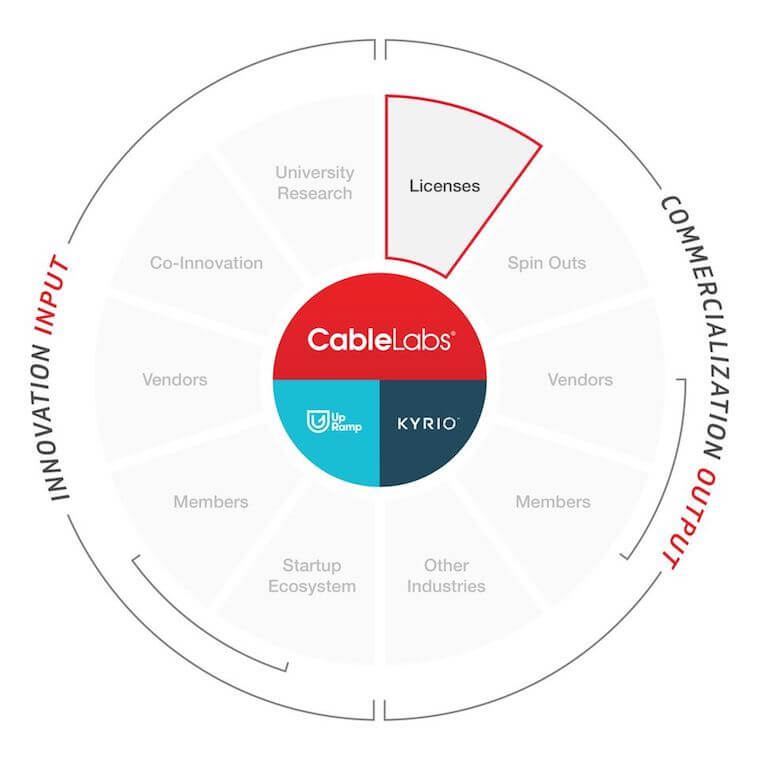
Hi, Jud here. A lawyer, writing a blog. Why? Because I’ve been asked so many times about how patents and licensing works that I decided to write it all down as an element in our CableLabs Innovation Series. I tend to spend a lot of my time (understatement!) working on both patents and licensing. So, here it goes.
In this blog, I’ll use the DOCSIS cable modem specification as an example because it’s foundational to broadband -- and broadband is life, right? Those of you who’ve been around since the early days of DOCSIS, know that it’s evolved in a lot of different ways. When DOCSIS was developed it was a method for delivering Internet speeds of 37 Mbps downstream (toward homes) and 8 Mbps upstream (toward the Internet.) These days, devices based on the newest DOCSIS flavors can blast data at a rate of 10 Gigabits per second, both ways.
But that didn’t just happen. It took process, development, governance, patents and licenses.
Why are Patents Important?
Patents are actually called out in the original U.S Constitution!
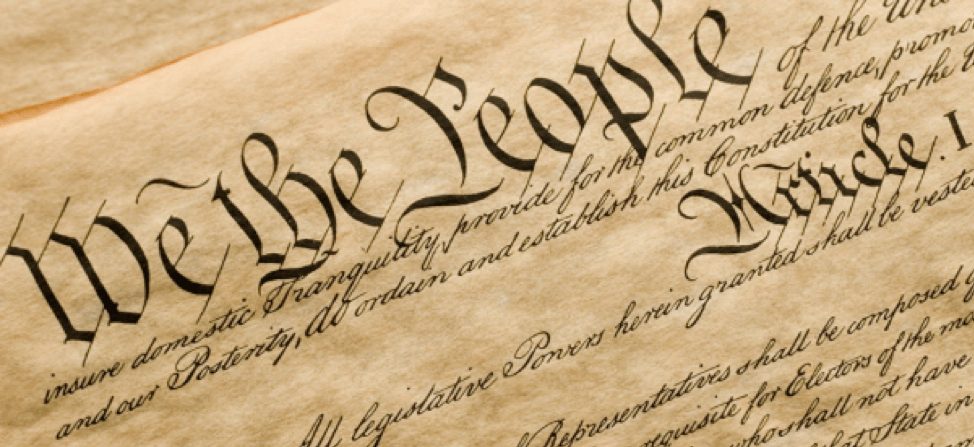
In theory and in practice, a patent protects inventive ideas for a specified and exclusive period of time. In return, the inventor agrees to disclose the invention to the public. Patents advance the general knowledge about the invention to the public. After the period of exclusivity, the public is free to use the invention to advance the technology further. As you can probably imagine, patents abound in complex technology areas such as telecommunications.
Why is Licensing Important?
Almost all standards and specifications carry an associated patent licensing requirement. That is to say, if you agree to work on and contribute to a specification, you also agree to license your patents that are essential to the implementation of that specification. This reality exists to prevent parties from inserting patented technology into a specification, then later say “gotcha!” by alleging the existence of patents that obviate your products, even though they conform to the specification. In legal-speak, this is known as a “patent hold-up.” If you’re thinking “hold up” as in “stick’’em up!” you’re in the zone.
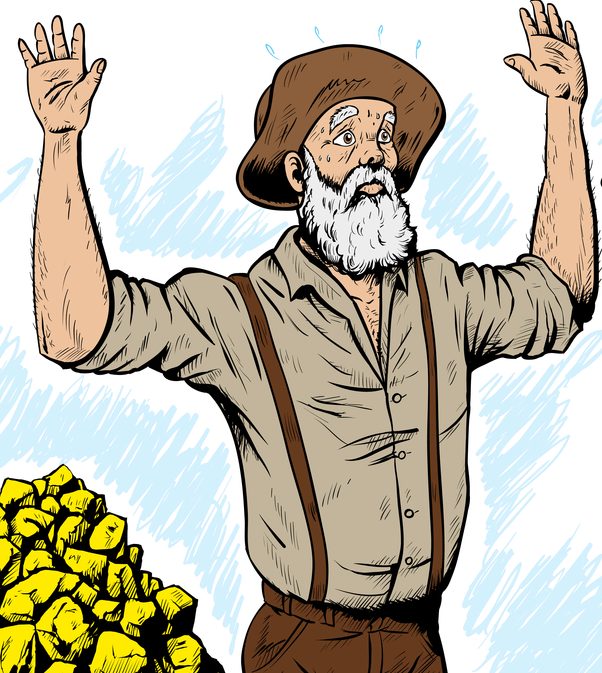
Ideally, for the sake of technological cooperation, interoperability, and advancements in innovation, players in the industry adhere to a patent licensing policy that sets up an environment of “leave your guns at the door.” In essence, manufacturers can then implement the specifications, without the fear of being sued for patent infringement by other DOCSIS manufacturers.
Again, using DOCSIS as an example, this is precisely what its licensing agreement, arranged long ago by CableLabs, provides: all signators agree to license their standard essential patents (SEPs) to CableLabs, including the right for CableLabs to the sublicense the SEPs to all other licensed signators - all on a royalty-free basis.
How Licensing Benefits Innovation
Licensing arrangements also create a nurturing environment for technological development, within which all parties can innovate, because all are free to build on everyone else’s technology -- again, without fear of later having to pony up unforeseen patent royalties.
The DOCSIS licensing arrangement fostered by CableLabs in the mid-’90s was and is a significant catalyst in the development, implementation, and widespread adoption of the DOCSIS platform. In all, this gun-free, royalty-free DOCSIS licensing environment consists of more than 200 signators! (In licensing terms, that’s a lot.)
Taking another approach: RAND
Many other typical telecommunications standards (e.g., 3GPP, Wi-Fi and DSL) were generally developed under a “reasonable and non-discriminatory,” or “RAND” patent policy. A RAND patent policy allows participants to collect “reasonable” royalties on patents required to implement the standard.
It follows that manufacturers sometimes sue each other if they disagree on what is “reasonable.” This can add a significant cost, as well as risk and uncertainty, to the development and deployment of these technologies. In case this isn’t patently obvious (see what I did there?), a RAND royalty rate is always greater than a royalty-free royalty rate! (And under the DOCSIS licensing arrangement, the RAND royalty is always $0.)
How Licensing Impacts the Bottom Line
How does this translate to the real-world bottom line? Since its inception, over 2.5 billion DOCSIS-based cable modems and gateways have been deployed. All with no royalties for patents necessary to implement the DOCSIS specification.
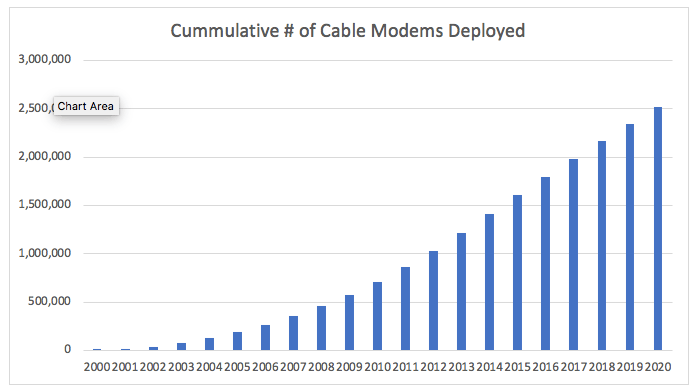
As the DOCSIS technology evolved to add additional features, faster speeds, and improved technology, so did the “patent pool” set up by the license arrangement expand. Think about it this way: if there were 1,611 technical requirements in DOCSIS version 1.0, there are 5,758 requirements in DOCSIS 3.1. That’s a pretty big expansion, and a lot of intellectual property, all protected from infringement litigation.
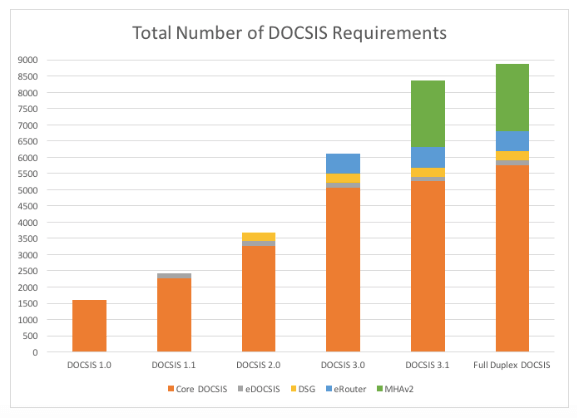
Licensing Arrangement as the Unsung Hero
It’s true that probably only lawyers think licensing is sexy, and that’s ok. But know that even if licensing doesn’t necessarily “wow” you with revolutionary advancements in cable/internet/wireless technology (see our Full Duplex DOCSIS and Coherent Optics technology pages), it’s still an important mechanism for business as usual.
From this lawyer’s perspective, the CableLabs’ royalty-free DOCSIS licensing arrangement has been the unsung hero for the last 20+ years, in terms of fostering implementation and rapid technological innovation, reducing risk, advancing adoption, and expanding deployment worldwide. And, as DOCSIS continues to be the workhorse for all things broadband, it is legally positioned to succeed.
That’s it! Feel free to contact me for more information, and thanks for reading!

News
Arianne Hinds Honored as the 2017 WICT Rocky Mountain Woman In Technology
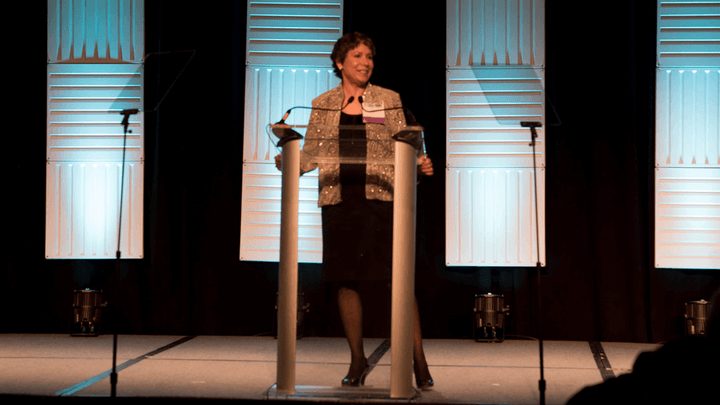
Last week, our very own Dr. Arianne Hinds received the prestigious 2017 WICT Rocky Mountain Woman in Technology Award. WICT is a national organization for Women in Cable Telecommunications, and the Rocky Mountain chapter is one of the largest and most influential of all the chapters. CableLabs has been a strong supporter of WICT for many years and is thrilled for Arianne to receive this recognition.
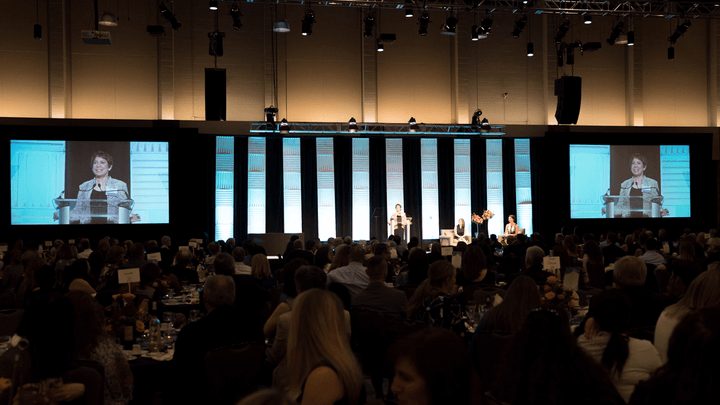
Dr. Arianne Hinds has over 25 years in the industry in the areas of image and video compression, including MPEG and JPEG. She currently serves as the head of the United States delegation to MPEG, as the Chairperson of the L3.1 Committee for United States MPEG Development Activity for the InterNational Committee for Information Technology Standards.
She is the lead inventor on several image and video compression patents, including four patents that are essential to a MPEG video standard (ISO/IEC 23002-2), for her work on fixed-point implementations of the Discrete Cosine Transform and Inverse Discrete Cosine Transform (DCT/IDCT); the same DCT/IDCT topic also served as the basis for her Ph.D. thesis. She has 17 patents issued so far and several more pending.
In her current role in the Office of the CTO, she is responsible for developing the strategy for CableLabs’ participation in 32 standards development organizations, industry consortia, and other technical fora. The resulting strategy is then shared with CableLabs members to facilitate alignment on key strategic goals: drive scale of technologies important to cable, create interoperable solutions that drive vendor diversity, improve the ability for our cable members to compete, and assess new technologies relevant to the cable business.
Arianne’s background as a video compression subject matter expert and her ability to drive consensus in challenging situations has profoundly increased the impact that the cable industry has on many video-related specifications, including MPEG and SCTE standards. As an example, she has been successful in driving cable-friendly requirements into adaptive bitrate specifications such as MPEG DASH and HEVC.
Arianne is also passionate about getting more women into computer science and engineering fields. She serves on the CU Boulder Computer Science Department Advisory Board and works to inspire more women to major in Computer Science (they are currently at an abysmal 15% female enrollment in the CU Computer Science Department!)
The WICT Rocky Mountain Woman In Technology Award recognizes a woman who has made significant contributions to her organization’s success and the industry through her impressive technical knowledge and accomplishments, or expertise in bringing new products or business to fruition. Honorees must be leaders in their fields and exemplify the WICT Touchstones of Leadership (always a good reminder of important traits for anyone in the industry):
WICT Touchstones of Leadership:
Touchstone 1: Know Yourself; what you stand for and where you are headed
Touchstone 2: Communicate with passion and poise
Touchstone 3: Listen with more than just your ears
Touchstone 4: Connect to your peers, your industry and everything around you
Touchstone 5: Be a Catalyst and set the wheels of change in motion
Touchstone 6: Be Fearless and confident in your convictions
Touchstone 7: Inspire and others will follow
The WICT touchstones of leadership are great guidelines for everyone to follow. Click here to read about these touchstones in detail.
Arianne received her award along with a number of other deserving industry colleagues at the WICT Rocky Mountain Walk of Fame gala, where over 680 industry professionals gathered to honor these inspiring women. CableLabs congratulates Arianne and all the 2017 WICT Rocky Mountain Walk of Fame honorees!
--
To find out more about Arianne's research read her blog post The Search for Royalty-Free Video Codec. You can also read some of her many publications by clicking here.
News
SCOTUS Sidesteps an Interface with APIs
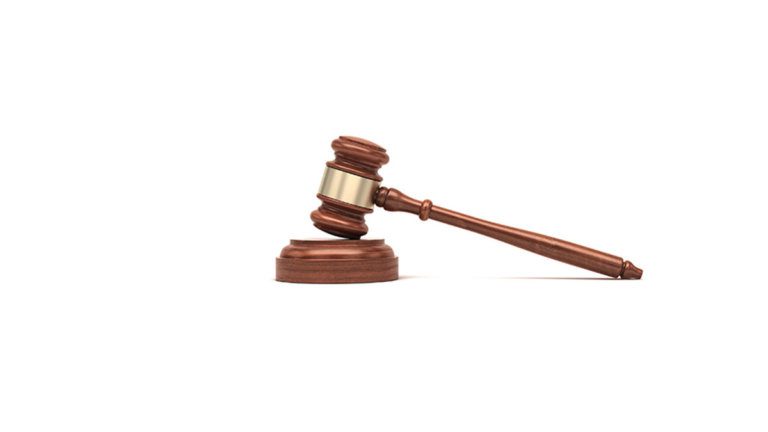
On the last day of its term, the Supreme Court refused to hear an appeal from the Court of Appeals for the Federal Circuit, and thus it let stand a controversial copyright decision by the appellate court on the copyrightability of application program interfaces or APIs.
The case, Oracle v. Google, dates back to 2010 when Oracle (then Sun Microsystems) sued Google over use of certain Java APIs belonging to Sun that were used in Google’s Android operating system. Both Oracle and Sun agreed that Google did NOT copy Oracle’s “implementing code,” but did copy verbatim Oracle’s “declaring code.” That is, Google copied the “method headers” from 37 Java packages with over 600 classes and over 6000 methods. Google then implemented each method with its own code.
The original trial court that reviewed the lawsuit held that APIs were not subject to copyright protection. The court reasoned “there is only one way to write” the header, and thus the “merger doctrine bars anyone from claiming exclusive copyright ownership of that expression.”
OK, so what is the “merger doctrine!?”
Basically, if there is only one way to express something, say “2+2=4”, then that expression “merges” with the idea itself. And, because ideas cannot be protected by copyright, the expression cannot be copyrighted. (Note, an idea might be protectable under patent law, but not copyright law). Google also argued that, of course the method headers must be the same in Android as they are in Java in order to maintain interoperability. The trial court agreed.
But wait, there’s more! Copyright in computer code covers the literal code itself, but can also the non-literal “sequence, structure and organization,” or SSO, so long as there is some modicum of creativity in the SSO. Here, Google argued that the SSO of the 37 Java packages, 600 classes, and 6000 methods was simply a “command structure” and excluded from copyright protection. Again, the trial court agreed.
Copyright Law Terms |
| Merger Doctrine Also called the “idea-expression dichotomy.” The Supreme Court stated "[u]nlike a patent, a copyright gives no exclusive right to the art disclosed; protection is given only to the expression of the idea—not the idea itself." Mazer v. Stein, 347 U.S. 201, 217. "[C]opyright's idea/expression dichotomy 'strike[s] a definitional balance between the First Amendment and the Copyright Act by permitting free communication of facts while still protecting an author's expression.” Harper & Row Publishers, Inc. v. Nation Enters., 471 U.S. 539, 556 (1985) |
| Sequence Structure and Organization (SSO) SSO is an alternative way of comparing one software code base to another in order to determine if copying has occurred, even when the second work is not a literal copy of the first. Whelan v. Jaslow (1986). SSO attempts to avoid the extremes of over-protection and under-protection of software code, both of which are considered to discourage innovation. |
| Fair Use Fair use was created by the courts, but is now enshrined in the Copyright Act 17 U.S.C. § 107. The Act directs courts as follows: “In determining whether the use made of a work in any particular case is a fair use the factors to be considered shall include:
|
Sounds reasonable? Well, the trial court got schooled by the appellate court.
The trial court made several key mistakes in applying the merger doctrine. The trial court focused its merger analysis on the options available to Google at the time of copying, rather than on Oracle’s options at the time of creating. Looked at from the time of creation, Oracle had almost unlimited ways to determine, create, name, and express the 6000 method headers. So, as long as there are several alternative expression choices at the time of creation, the merger doctrine does not apply.
The appellate court further found the sequence structure and organization of the Java packages, classes, and methods sufficiently creative to be copyrightable. And, the court noted, Google did not need to copy verbatim the SSO to make a functionally equivalent platform, albeit not interoperable with Java. See, for example, competitive mobile platforms of Apple iOS or Microsoft Windows Phone.
The case heads back to the trial court to determine if Google’s use of the APIs nevertheless falls under the “fair use” defense doctrine. The factors the trial court will use to determine fair use are: (1) “the purpose and character of the use, including whether such use is of a commercial nature or is for nonprofit educational purposes;” (2) “the nature of the copyrighted work;” (3) “the amount and substantiality of the portion used in relation to the copyrighted work as a whole;” and (4) “the effect of the use upon the potential market for or value of the copyrighted work.”
Typically courts consider the “commercial nature” of the use as almost dispositive. That is, if any direct or indirect commercial gain is obtained by the use, the fair use defense does not apply. So, IMHO, I think Google will have a hard time succeeding on a fair use defense.
So, what does this mean?
The high tech sector uses, and for that matter CableLabs develops, APIs, including Java APIs, in many projects, platforms, and systems. APIs are intrinsically necessary whenever you want two software systems, platforms, or layers to communicate with each other in an interoperable manner.
The court’s ruling holds that such APIs are likely copyrightable by the creator/owner of the APIs. This means the copyright owner can enforce a copyright license on users of the APIs, or choose not to license the APIs at all. We note that many projects employ an “open source” license with very few restrictions on use, and no royalty of fee. Other projects, like Oracle’s Commercial Use License for Java, may impose fees, and require strict adherence to the APIs and a Certification program in order to maintain interoperability — maybe a good thing.
Similar to APIs, “data models” are widely used by the high tech sector. For example, data models are widely used in the burgeoning Internet of Things to generically represent anything from a light bulb to a refrigerator. It is unclear if data models are so similar to APIs that they too are copyrightable.
CableLabs plays an important role in establishing ownership and managing the associated copyrights of specific APIs and data models. Through our well-tested project creation, project management, and legal agreements, CableLabs ensures that copyright ownership vests with CableLabs (or, at a minimum, a joint ownership interest with the creator), and CableLabs can enforce such copyrights if needed. This disciplined role is especially key in the world of open source that can often become fragmented or “tainted” with multiple ownership rights that are difficult to later enforce. CableLabs will continue to foster collaborative work with our members, and suppliers, while also ensuring copyright ownership is made clear.
Jud Cary is the Deputy General Counsel at CableLabs.

